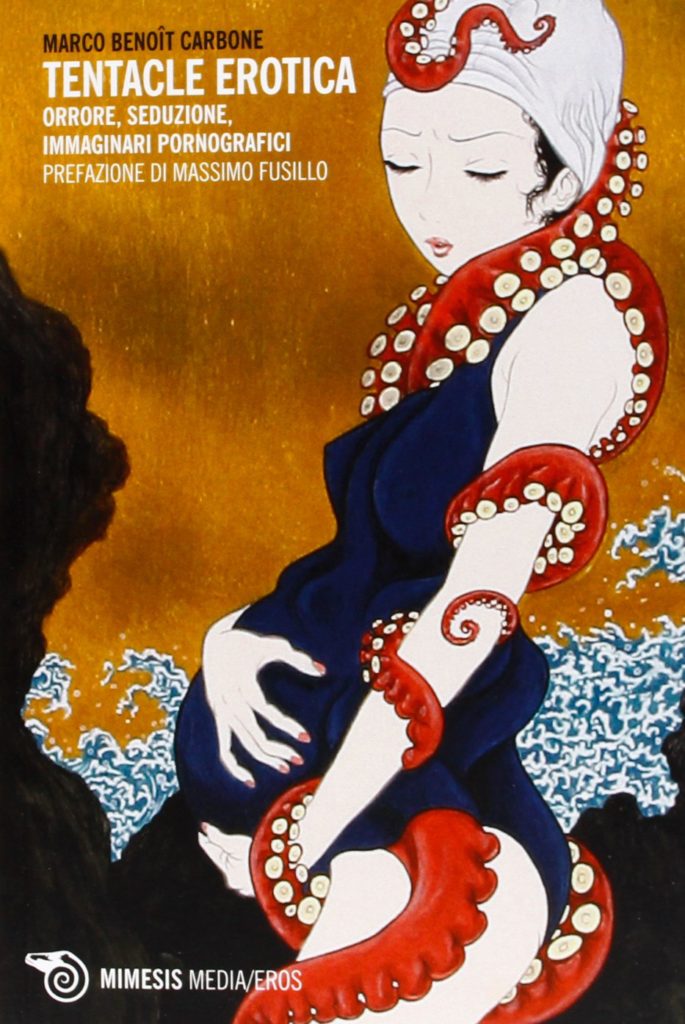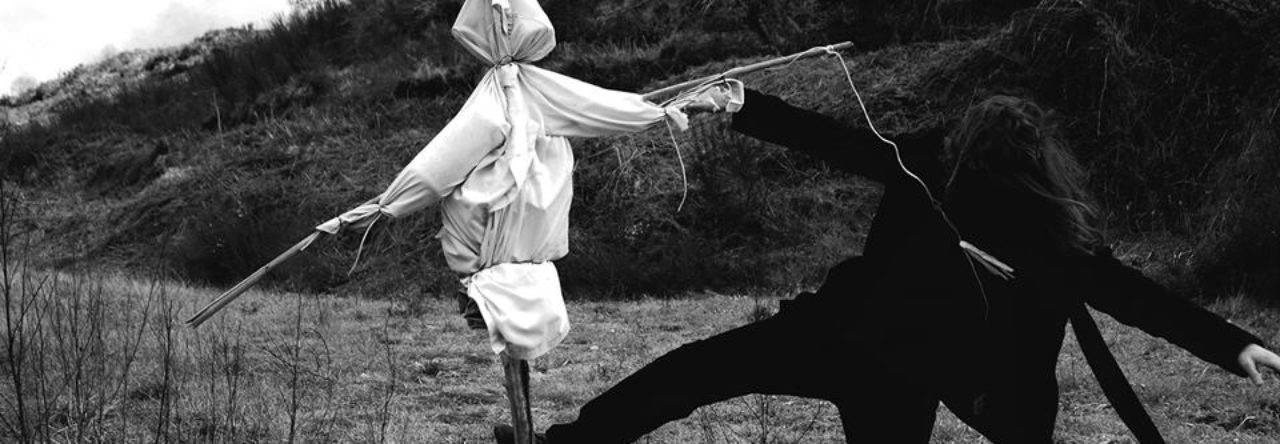
This critical essay in Italian explores emerging formulations of the visual trope of ’tentacle erotica’ in the arts and media of the past few decades. Putting them in relation to previous iconographies and textual genealogies, it examines representations and stories of monstrous intercourse that explore and straddle the line between attraction and repulsion across visual cultures and literatures.
The tentacle erotica trope has been serving manifold explorations of gendered horror in popular cultures – from normative apologetics of the male gaze, rape culture, and speciesist projections to progressive explorations of non-normative, fluid, and xenomorphic gendered practices. The study looks at its transantional emergence across Japan and the United States in media such as manga, anime, pulp literature and horror film, reworking visual iconographies of interspecies intercourse, bestiality, and sexualised monstrosity. It also examines the relations of these media with iconographies from previous historical traditions – from the Glaucus of Greek mythology to Japanese artist Hokusai’s notorious image of intercourse between a woman and an octopus.
The study focuses on three distinct phases of the modern emergence of the trope and its variant signifiers – ranging from ‘tentacle rape’ and ‘tentacle sex’ to ‘tentacle erotica’. First, the modern, transnational formalisation of the trope, from early US pulp and horror film to the work of Japanese mangaka Toshio Maeda. Second, the historical antecedents of the trope in the visual arts, from Hokusai’s erotic shunga woodblocks to Picasso’s japoniste imagery. Third, the more recent circulations of the trope across social media and visual platforms, from fine and fan art to pop references in television and animation series and Wikipedia histories.
Finally, the study examins tentacles as biological structures that have become transfixed culturally as phallic equivalents and signifiers of otherness, pointing to how the heterogeneous and yet tightly interweaved trope of tentacle erotica has come to signal anything from Dionysian explorations of post-human hybridity to orientalist stereotypes, regressive sexism, and animal abuse.
Blurb
“In a book titled Tentacle Erotica one would hardly expect to find references to Montaigne, Greek myth, Victor Hugo, Picasso, and Hokusai. Granted, they are in the company of strippers, fetish models, octopus porn, BDSM, horror, hentai, cyberpunk, and much more. Yet, this is no spurious accretion, provocative act of contamination, or attempt to legitimise pornographic imagery through mythology. Rather, this is something much more complex and consistent, even though by means of a spiralling logic. Marco Benoît Carbone delivers a wide-angle reading of the tentacle, a figure whose visual rhetoric encapsulates a wealth of mythical, cultural, and anthropological resonances, while offering a chance to probe into controversial issues. From misogynistic crimes to the limits of censorship. From the exoticism of the erotic imagination to obstinate stereotypes on Japan. From the social uses of pornography to its aesthetic value. Touching upon the dilemma of whetherto consider pornography’s extreme territories as a form of dominion or as a liberating, diverse, and Dionysian practice.
~ From the Foreword by Massimo Fusillo ~
Buy the Book – Amazon.it
Media coverage for Tentacle Erotica
Fetching up. Please be in touch and check back.
Academic Reviews
Fetching up. Please be in touch and check back.
Praise for the book
Fetching up. Please be in touch and check back.
